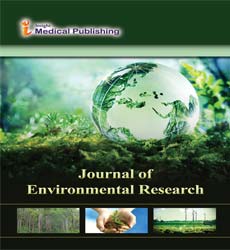Particulate soot-matter Pollution of recreational pools in Port Harcourt; Toxicity evaluation and children???s health risk assessment.
Abstract
Statement of the Problem: The increasing level of air pollution from air-borne black soot particles in Port Harcourt metropolis in the past 4 years with very obvious deposits in residential homes and water bodies/ponds has become a great concern especially for children who indulge in recreational pools’ activities. Researchers have shown that the soot deposits contain metals ions and hydrocarbons. This study was carried out as a preliminary health risk assessment for children who utilise swimming pools for recreational activities in Port Harcourt. This involved evaluation of the toxicity of selected recreational pools using “Ostracods-linked mathematical model”, (a quantitative whole-water toxicity assay), protein oxidation and hepatotoxicity in the rats’ hepatocytes and questionnaire-based analysis. Five (5) recreational pools (4 outdoor and 1 indoor) were used out of the randomly selected 8, from 30 identified in Port Harcourt. Structured questionnaires were also used to elicit relevant information from children (10-13 years) who consistently engaged in recreational pool activities. Results show that 3 of the 5 recreational pools have significantly high percent mortality effect on Ostracods Heterocypris incongruens, the indicator organism. The toxicity indices of the pool waters showed “no-observed effect toxicity” for the indoor pool (SP 4), 20.8 for 1 outdoor pool (SP 1), 42.5 for 2 outdoor pools (SP 2 and 3) and 49.0 for 1 outdoor pool (SP 5). Out of 79 children who are frequent users of the 5 selected pools, 26 (32.91%) were traced. Analysis of the structured questionnaires administered to these 26 children and their parents inferred that none of the children has or had any of the recreational water illnesses such as gastrointestinal disorder, skin rashes and acute respiratory disease, suggesting zero or insignificant bacterial contamination of the pools. However protein oxidation in rats and hepatotoxicity of rats’ hepatocytes incubated with portions of pool water samples suggest that the exposed children may not be cancer-risk free in future especially if the prevailing black soot particles pollution continues unabated while the children still indulge in the use of these pools. It is recommended that further monitoring of the exposed children be continued while measures such as more frequent changes of the pool water be ensured or to prevent further use of pools while the particulate soot-matter air pollution persists.
Open Access Journals
- Aquaculture & Veterinary Science
- Chemistry & Chemical Sciences
- Clinical Sciences
- Engineering
- General Science
- Genetics & Molecular Biology
- Health Care & Nursing
- Immunology & Microbiology
- Materials Science
- Mathematics & Physics
- Medical Sciences
- Neurology & Psychiatry
- Oncology & Cancer Science
- Pharmaceutical Sciences
